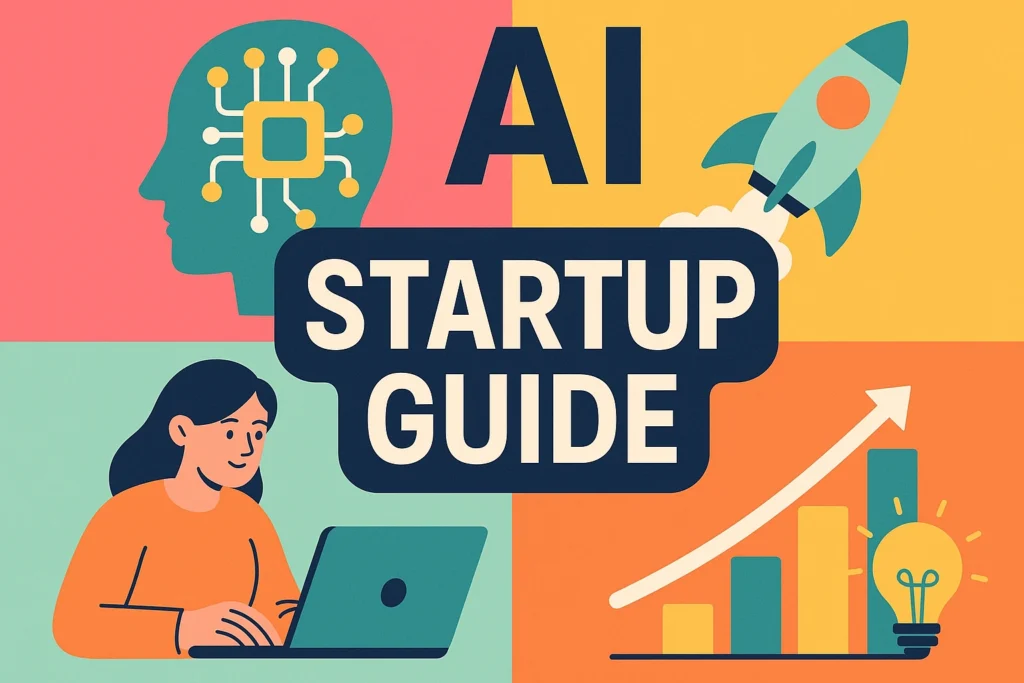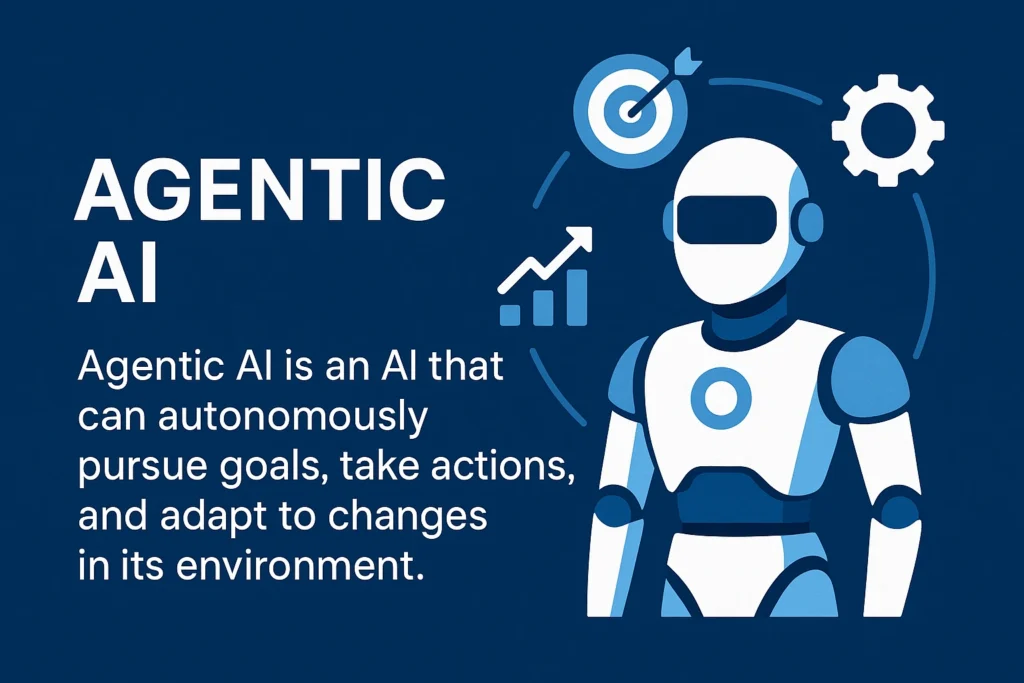Table of Contents
ToggleAI Startup Guide

Launch Your AI Empire
The artificial intelligence market is booming. This is your step-by-step guide to not just participate in the revolution, but to lead it.
Steps 1 & 2: Foundation & Blueprint
Validate your idea through deep market research and craft a dynamic business plan to guide your journey.
Find Your Niche
The AI market is vast. Specializing is key to standing out. Will you focus on high-performance hardware, cutting-edge software, or integrated, ready-to-deploy solutions?
Breakdown of potential AI business focuses.
Identify Your Audience
Understanding who you're selling to is critical. Each segment has unique needs, from raw power for developers to scalable, secure solutions for large enterprises.
Potential market share by customer segment.
Steps 3 & 4: Making it Official & Fueling Growth
Establish a solid legal foundation and secure the necessary capital to turn your vision into reality.
Startup Funding Sources
From bootstrapping with personal savings to securing venture capital, each funding path offers different levels of control and scalability. This chart shows typical funding ranges.
Choose Your Structure
LLC
Good for flexibility and liability protection in smaller operations.
C-Corp
Ideal for seeking venture capital, as it's the preferred structure for investors.
S-Corp
Offers tax advantages for certain small businesses.
Steps 5 & 6: Building Your Offering & Your Team
Develop or source your products and assemble a talented team with the specialized skills to succeed in the AI ecosystem.
Your Core AI Team
Your team is your greatest asset. An AI startup requires a blend of deep technical expertise, savvy sales skills, and operational excellence.
Crafting Your Value Proposition
What makes your business the best choice? Differentiate your offerings to attract and retain customers.
- Pre-configured, optimized AI systems
- Expert technical support and training
- Customized solutions for specific industries
- Competitive pricing on high-performance gear
Steps 7 & 8: Go-to-Market & Beyond
Reach your tech-savvy audience with a targeted marketing strategy and plan for a successful launch and sustained growth.
Effective Marketing Channels
Reaching the AI community requires a multi-faceted approach. This radar chart compares the potential impact of various marketing strategies for an AI startup.
Launch & Growth Loop
The launch is just the beginning. Continuous innovation driven by customer feedback is the key to long-term success.
Launching Your AI Hardware & Software Startup: A Step-by-Step Guide
The artificial intelligence market is booming, offering unprecedented opportunities for those ready to innovate and execute. This isn't just about selling products; it's about empowering the next wave of technological advancement. Let's break down the process, step by step.
Step 1: Idea Validation & Deep Market Research (The AI Angle)
Before you even think about a logo, you need to understand the terrain. The AI landscape is vast and rapidly evolving.
Identify Your Niche: "AI hardware and software" is broad. Will you focus on:
- AI Hardware: High-performance GPUs, custom AI accelerators (e.g., TPUs, NPUs), edge AI devices, specialized servers?
- AI Software: Machine learning platforms, AI development kits (SDKs), pre-trained models, AI APIs, MLOps tools, industry-specific AI applications?
- Solutions: Will you sell components, or offer integrated solutions (e.g., an AI-ready server with pre-installed ML software)?
Target Audience Deep Dive: Who are your ideal customers?
- Data Scientists & AI Developers: Need powerful tools and flexible platforms.
- Enterprises: Looking for scalable, secure, and integrated AI solutions for specific business problems (e.g., fraud detection, predictive maintenance, customer service AI).
- Researchers & Academia: Often require cutting-edge hardware for complex model training.
- Startups: Seeking cost-effective yet powerful solutions to get off the ground.
Competitor Analysis: Who else is in this space? What are their strengths and weaknesses? How will you differentiate? Is it price, specialized support, unique integrations, or a niche product offering?
Market Trends: Stay on top of trends like edge AI, explainable AI (XAI), responsible AI, MLOps, and the increasing demand for specialized hardware for large language models (LLMs). This will inform your product selection.
Step 2: Crafting Your AI Business Plan
Your business plan is your roadmap. For an AI startup, it needs to be dynamic and forward-looking.
Executive Summary:
A compelling overview of your vision, products, and market opportunity.
Company Description:
- Vision & Mission: What problem are you solving? What impact do you want to make in the AI world?
- Legal Structure: (e.g., LLC, C-Corp, S-Corp) – consider future funding and liability.
Products & Services:
Detail your offerings.
- For hardware: Specific models, brands, performance metrics.
- For software: Licensing models, features, compatibility.
- Will you offer consulting, integration, or support services as a value-add?
Market Analysis: Summarize your research from Step 1. Include market size, growth projections, and your specific target segments.
Sales & Marketing Strategy: How will you reach your tech-savvy audience? (More on this in Step 7).
Operations Plan: How will you source, store, and deliver hardware? How will software licenses be managed? What about technical support?
Management Team: Highlight the expertise of your founders, especially in AI, tech sales, and supply chain.
Financial Projections: Realistic startup costs (inventory, marketing, legal, initial salaries), revenue forecasts, break-even analysis, and funding requirements.
Step 3: Legal Structure & Compliance
This is where you make it official.
Choose Your Entity:
- LLC (Limited Liability Company): Good for flexibility and liability protection for smaller operations.
- C-Corp: Ideal if you plan to seek venture capital funding, as it's the preferred structure for investors.
- S-Corp: Can offer tax advantages for certain small businesses.
Registration: Register your business name and entity with the relevant state authorities.
EIN (Employer Identification Number): Get this from the IRS for tax purposes.
Permits & Licenses: Research federal, state, and local requirements. This can vary significantly, especially for hardware sales and international shipping.
Intellectual Property (IP): If you're developing proprietary software or unique integration methods, protect your IP (trademarks for your brand, copyrights for software code).
Contracts: Draft clear terms of service, sales agreements, and partnership contracts.
Step 4: Funding & Financing Your AI Venture
Every startup needs fuel.
- Bootstrapping: Using your own savings or initial revenue. This gives you maximum control.
- Friends & Family: Often the first external source of capital.
- Angel Investors: Individuals who invest in early-stage companies, often with industry expertise.
- Venture Capital (VC): For high-growth potential AI startups. Be prepared for rigorous due diligence and giving up equity.
- Grants: Look for government or private grants focused on AI innovation or specific technological advancements.
- SBA Loans/Bank Loans: Traditional financing options, though often harder for early-stage startups without significant collateral or revenue.
Craft Your Pitch Deck:
This is crucial for external funding. It must clearly articulate:
- The massive opportunity in the AI market.
- Your unique solution (hardware/software).
- Your go-to-market strategy.
- Your team's expertise.
- Your financial projections and how the investment will be used.
Step 5: Product/Service Development & Sourcing
This is where your offerings come to life.
Hardware Sourcing:
- Suppliers: Identify reliable manufacturers or distributors for GPUs, AI chips, servers, etc.
- Quality Control: Establish processes to ensure the hardware meets performance and reliability standards.
- Logistics: Plan for shipping, warehousing, and inventory management.
Software Sourcing/Development:
- Partnerships: Secure agreements with leading AI software vendors (e.g., NVIDIA, Hugging Face, various MLOps platforms).
- Proprietary Solutions: If you're building your own software, define the development roadmap, tech stack, and team.
- Integration Services: How will your hardware and software offerings work together seamlessly for the customer? This can be a major differentiator.
Value Proposition: What makes your offering superior? Is it:
- Pre-configured, optimized AI systems?
- Expert technical support and training?
- Customized AI solutions tailored to specific industry needs?
- Competitive pricing for high-performance gear?
Step 6: Building Your Dream Team (AI-Ready Talent)
Your team is your greatest asset, especially in a specialized field like AI.
Core Team:
- AI Engineers/Architects: Essential for understanding the products and providing pre-sales/post-sales technical support.
- Tech Sales Specialists: Salespeople who understand complex AI solutions and can speak the language of data scientists and enterprise IT decision-makers.
- Supply Chain/Logistics Manager: Crucial for hardware businesses.
- Customer Support: For troubleshooting and ongoing assistance.
Culture: Foster a culture of innovation, continuous learning (AI evolves fast!), problem-solving, and customer obsession.
Step 7: Marketing & Sales Strategy (Targeting the AI Ecosystem)
Reaching your audience requires a tailored approach.
Digital Marketing:
- SEO: Optimize your website for AI-related keywords (e.g., "GPU for deep learning," "MLOps platform," "AI inference server").
- Content Marketing: Create valuable content:
- Blogs: Tutorials, industry insights, product comparisons.
- Whitepapers/Case Studies: Demonstrate how your solutions solve real-world AI problems.
- Webinars/Workshops: Educate potential customers on AI applications and your products.
- Social Media: Engage on platforms where AI professionals gather (LinkedIn, Reddit communities like r/MachineLearning, r/deeplearning, Twitter/X).
- Paid Ads: Target specific demographics and interests on Google Ads, LinkedIn Ads.
Partnerships: Collaborate with AI consulting firms, system integrators, cloud providers, and even AI research labs to expand your reach.
Events & Conferences: Attend major AI/tech expos (e.g., NVIDIA GTC, NeurIPS, AWS re:Invent, Google Cloud Next) to network, showcase products, and generate leads.
Sales Process:
- High-Touch Sales: For complex enterprise solutions, a direct sales team engaging in demos and consultations.
- E-commerce: For standardized hardware and software, a robust online store.
- Lead Nurturing: Develop a system to convert leads into customers.
Step 8: Launch & Post-Launch Growth
The launch is just the beginning.
- Soft Launch: Release to a small group of beta customers to gather feedback and iron out kinks.
- Official Launch: Announce your presence!
- Customer Support: Provide exceptional technical support. AI hardware and software can be complex, and reliable support builds trust and loyalty.
- Feedback Loop: Continuously collect customer feedback to improve products and services.
- Scaling Operations: As you grow, scale your inventory, logistics, customer support, and team.
- Continuous Innovation: The AI field moves at lightning speed. Stay agile, research new technologies, and adapt your offerings to remain competitive and relevant.
Frequently Asked Questions (FAQ)
The AI market is booming, offering unprecedented opportunities to innovate and empower the next wave of technological advancement by selling AI hardware and software.
Begin by identifying your niche (AI hardware, software, or integrated solutions), deep diving into your target audience (Data Scientists, Enterprises, Researchers, Startups), analyzing competitors, and staying updated on market trends like edge AI and LLMs.
An AI business plan should include an Executive Summary, Company Description (Vision, Mission, Legal Structure), detailed Products & Services, Market Analysis, Sales & Marketing Strategy, Operations Plan, Management Team details, and Financial Projections.
Common choices include LLC (for flexibility and liability protection), C-Corp (ideal for venture capital funding), and S-Corp (for certain tax advantages). Proper registration, EIN, permits, licenses, IP protection, and contracts are also crucial.
Funding options range from bootstrapping, friends & family, and angel investors to venture capital, grants, and traditional bank loans. Crafting a compelling pitch deck is essential for external funding.
This involves sourcing hardware (suppliers, quality control, logistics), sourcing/developing software (partnerships, proprietary solutions, integration services), and defining a strong value proposition (e.g., pre-configured systems, expert support, customization, competitive pricing).
A strong core team should include AI Engineers/Architects (for technical support), Tech Sales Specialists (for complex solutions), a Supply Chain/Logistics Manager (for hardware), and Customer Support. Fostering a culture of innovation and continuous learning is also key.
Effective strategies include digital marketing (SEO, content, social media, paid ads), strategic partnerships, attending industry events/conferences, and developing a robust sales process (high-touch for enterprises, e-commerce for standardized products, lead nurturing).
Note: While the original text mentioned "More on this in Step 7," this FAQ summarizes the key points directly.
Begin with a soft launch for feedback, followed by an official launch. Post-launch, focus on exceptional customer support, maintaining a feedback loop for continuous improvement, scaling operations, and constant innovation to stay competitive in the fast-evolving AI field.
"Launching an AI hardware and software business is a venture into the future. It requires technical acumen, business savvy, and a relentless drive to innovate. By following these steps, you'll build a solid foundation to not just participate in, but actively shape, the rise of AI. Good luck!"


